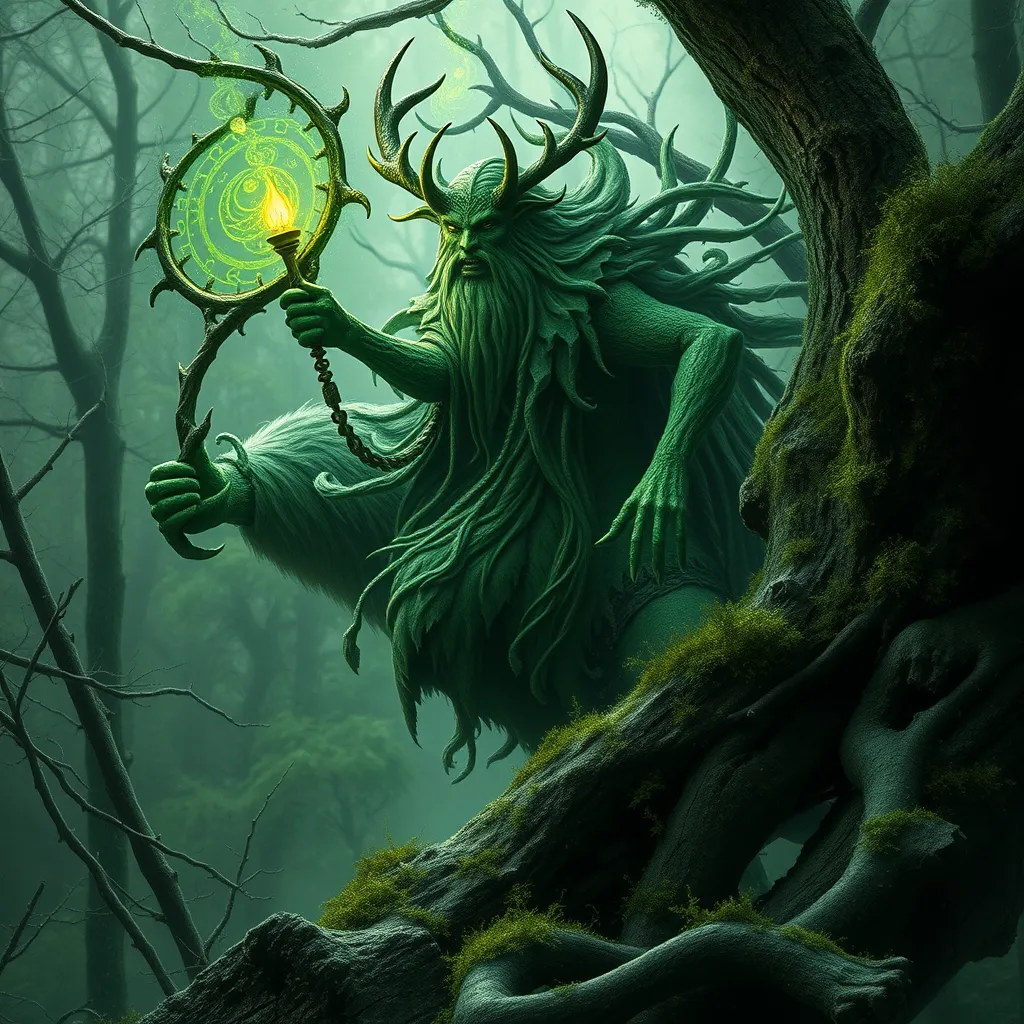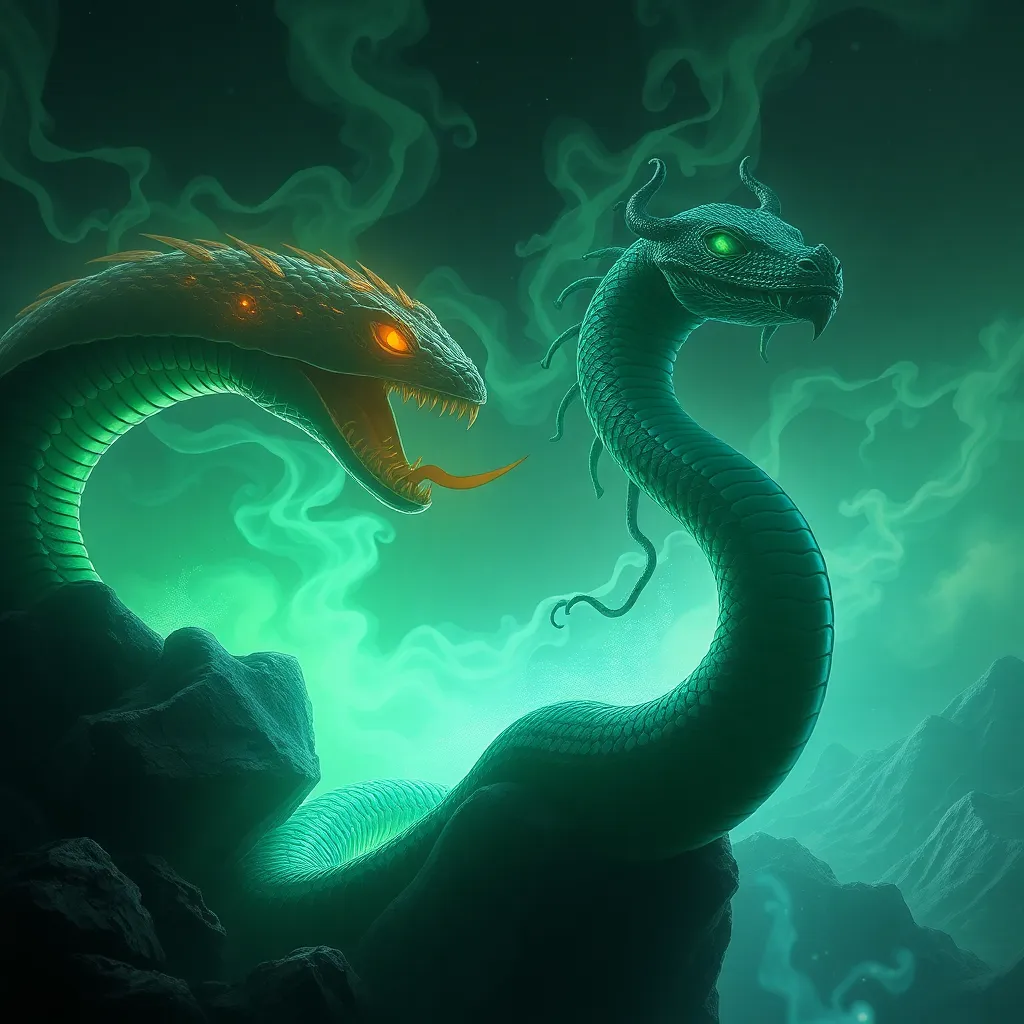The Green Man, the Wild Hunt, and the Fae: Celtic Folklore and the Supernatural
I. Introduction to Celtic Folklore
Celtic folklore is a rich tapestry of myths, legends, and supernatural beliefs that have been passed down through generations among Celtic peoples. It serves not only as a form of entertainment but also as a means of preserving cultural identity and values.
Supernatural elements play a pivotal role in Celtic mythology, often embodying the mysteries of nature, the cycle of life, and the unknown realms beyond human understanding. This article aims to explore some of the key figures and themes within this enchanting folklore, specifically focusing on the Green Man, the Wild Hunt, and the Fae.
II. The Green Man: Symbol of Nature and Rebirth
The Green Man is a compelling symbol found in various cultures, particularly in Celtic and medieval art. His historical origins can be traced back to ancient pagan traditions, where he was often depicted as a face surrounded by or made of leaves, vines, and other forms of vegetation.
As a symbol, the Green Man embodies fertility, growth, and the perpetual cycle of life and death. He represents the rejuvenation of nature each spring, celebrating the interconnections between humanity and the environment. This vibrant figure serves as a reminder of the importance of respecting and nurturing our natural surroundings.
In contemporary culture, the Green Man has experienced a resurgence, appearing in various forms of art, literature, and even popular media. Artists and writers often invoke his imagery to convey themes of ecological consciousness and the harmony between mankind and nature.
III. The Wild Hunt: Myth and Meaning
The Wild Hunt is a legendary phenomenon in Celtic folklore, characterized by a ghostly procession of hunters and hounds racing through the skies. This spectral hunt is often led by a mythological figure, such as the god of the hunt or a warrior spirit.
Historically, accounts of the Wild Hunt vary across different Celtic regions, with each culture adding its unique twists and interpretations. In some tales, it is seen as a harbinger of doom, signaling impending death or disaster, while in others, it represents the transition between life and the afterlife.
Interpretations of the Wild Hunt often delve into its metaphorical significance. It can be viewed as a representation of the inevitability of death and the passage into the unknown, reflecting the beliefs of ancient cultures about the afterlife and the cyclical nature of existence.
IV. The Fae: Guardians of the Otherworld
The Fae, or fairies, are an integral part of Celtic mythology, representing a diverse range of supernatural beings often associated with nature. They are typically viewed as guardians of the Otherworld, a mystical realm that exists parallel to our own.
Within the category of Fae, there are various types, including:
- Fairies: Often depicted as small, ethereal beings with wings, they possess magical powers and are known for their mischievous nature.
- Elves: Typically portrayed as taller and more human-like, they are often associated with wisdom and beauty.
- Sprites: Small, elemental beings linked to water and air, known for their playful and whimsical behavior.
The Fae play significant roles in folklore, serving as both protectors and tricksters. They are deeply connected to nature, symbolizing the wild, untamed aspects of the world and reminding humanity of its place within the natural order.
V. Interconnections Between the Green Man, the Wild Hunt, and the Fae
At the heart of Celtic folklore are common themes that intertwine the narratives of the Green Man, the Wild Hunt, and the Fae. Each figure reflects profound connections to nature, the cycle of life, and the mysteries surrounding death.
Shared symbolism across these figures includes:
- The celebration of nature and its cycles.
- The exploration of life and death as interconnected experiences.
- The reminder of humanity’s relationship with the natural world and the supernatural.
The influence of these archetypes on one another is evident in the ways they have been depicted and interpreted over time, creating a cohesive narrative that resonates with the human experience.
VI. The Cultural Impact of Celtic Supernatural Figures
The figures of the Green Man, the Wild Hunt, and the Fae have significantly influenced literature, art, and modern media. They serve as powerful symbols that evoke the mysteries of nature and the supernatural, inspiring countless stories and artistic expressions.
In contemporary society, there has been a resurgence of interest in Celtic folklore, with many people seeking to reconnect with their cultural roots. This renewed fascination is evident in:
- Literature that incorporates themes of magic and nature.
- Art that explores the fantastical elements of Celtic mythology.
- Films and television shows that draw upon these rich narratives.
These figures continue to inspire modern storytelling, reminding us of the enduring legacy of Celtic folklore in shaping cultural narratives.
VII. Regional Variations and Interpretations
Across the Celtic regions of Ireland, Scotland, Wales, and beyond, local legends and interpretations of the Green Man, the Wild Hunt, and the Fae vary significantly. Each culture has its unique take on these figures, shaped by historical, geographical, and social factors.
For example:
- In Ireland, the Wild Hunt is often associated with the mythical figure of the Dullahan, a headless horseman.
- In Scotland, the Fae are frequently linked to the mystical location of the Fairy Glen, a site believed to be inhabited by fairies.
- In Wales, the Green Man is celebrated during various festivals, symbolizing the arrival of spring.
As cultural beliefs evolve, so do the representations of these figures, reflecting the changing landscapes of Celtic identity.
VIII. Conclusion: The Enduring Legacy of Celtic Folklore
The Green Man, the Wild Hunt, and the Fae are significant figures within the realm of Celtic folklore, each embodying deep connections to nature, life, and the supernatural. Their stories resonate with themes of growth, death, and the mysteries of existence, offering valuable insights into the human experience.
Preserving these folklore traditions is essential, as they provide a window into the values and beliefs that shaped ancient Celtic societies. In a world increasingly disconnected from nature, the tales of the Green Man, the Wild Hunt, and the Fae remind us of our responsibility to honor and protect the natural world.
Ultimately, the interplay between nature, mythology, and human experience continues to be relevant today, inviting us to explore the magic and mystery that lies within our own lives.



